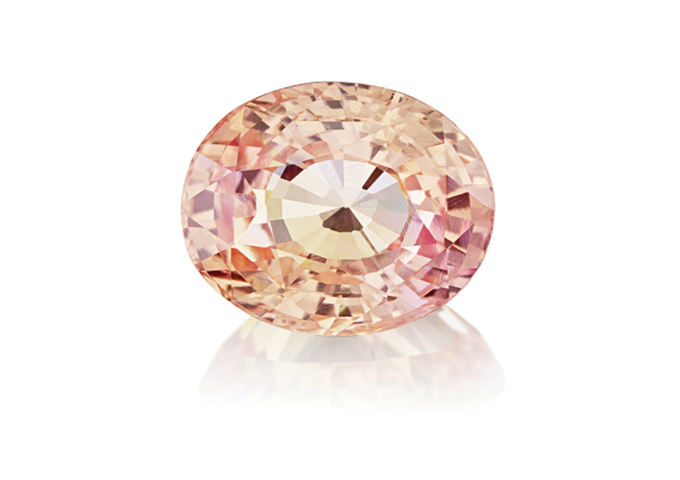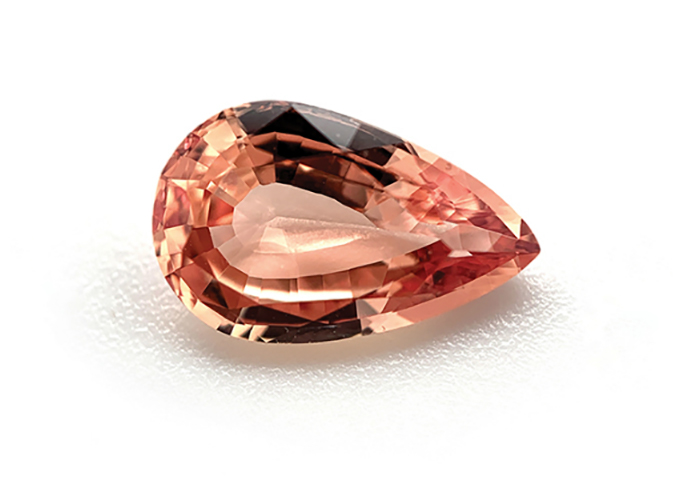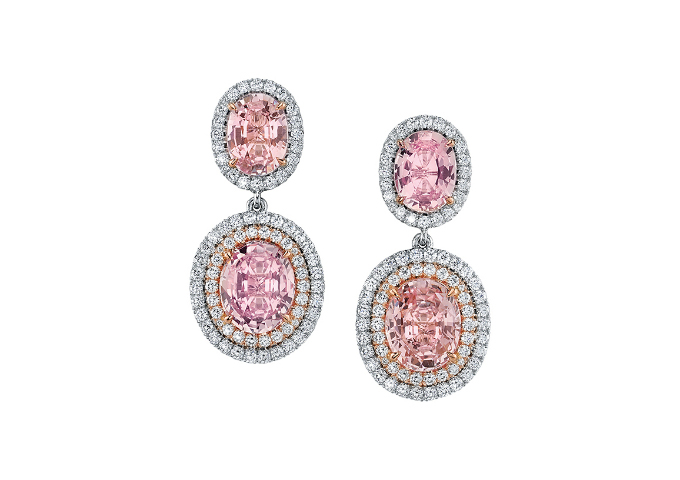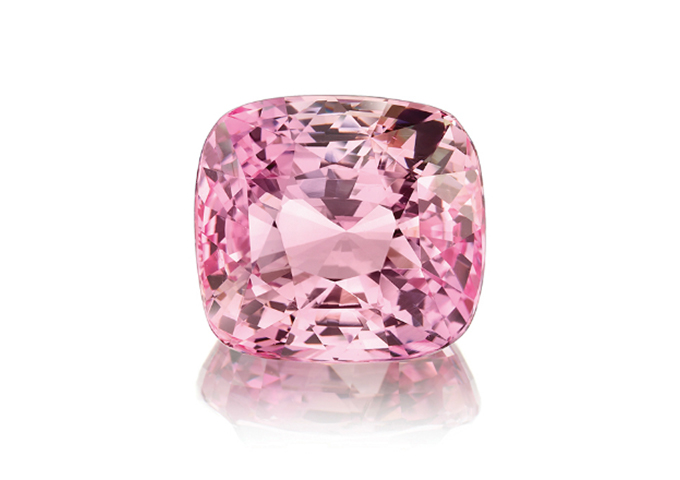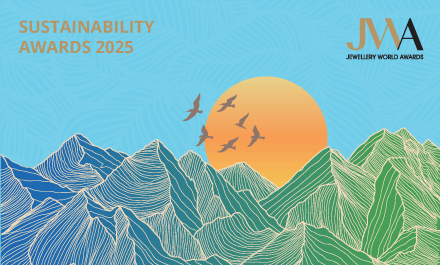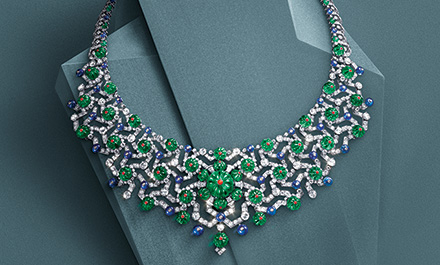Padparadscha sapphires have been enjoying a promising turn of late, bursting onto the global gemstone and jewellery scene with much fanfare. Since it caught the public’s eye in 2018 as the centre stone of Princess Eugenie’s engagement ring, gem traders have witnessed an uptick in demand for Padparadscha, thanks to growing awareness of its distinctive characteristics.
Hailed by many in the trade as the king of sapphires, Padparadscha is one of the rarest and most beautiful members of the corundum family. Coveted for their inimitable fusion of orange and pink, the finest of these gems – most often found in Sri Lanka – display a fiery colour, reminiscent of a tropical dusk. The word Padparadscha is derived from the Sinhalese word for “lotus blossom.”
Fine stones can also be found in Vietnam, Madagascar and Tanzania. Althas Cader from Jewelmine Gems explained that Sri Lankan stones are mostly preferred by gem connoisseurs since these command the highest prices compared to those from other origins.
This subtle blend of pastel pink and orange has a strong global following. According to Bill Larson, president of US-based fine gems supplier Pala International, European and Asian buyers are most familiar with Padparadscha sapphires. There is also strong demand in the US but mostly for commercial-quality goods as opposed to collectors who look for fine-quality gems.
Solid demand, tight supply
Demand for this gem remains strong amid the Covid-19 pandemic due to its sheer rarity, limited production and resource. Armil Sammoon, chairman of Sapphire Capital Group and Sri Lanka’s ambassador to the International Colored Gemstone Association, commented, “Sales and inquiries for Padparadscha sapphires have remained steady in the last three months despite supply chain disruptions during the lockdown.”
Markus Wild, CEO of German gemstone specialist Paul Wild OHG, echoed this sentiment, adding that top-grade material is always highly sought after.
It has become exceedingly difficult for gem buyers to obtain Padparadscha sapphires. According to Larson, approximately less than 1 per cent of gem-quality sapphire production falls under the Padparadscha category. Tighter supply can also be attributed to depletion of sapphire mines and heavy competition, added Cader.
Dinidu Tennakoon, director and production manager of Punsiri Gems, also pointed to heavy rains in the last few months, which have led to the temporary closure of sapphire mines.
Wild remarked that there is still production of Padparadscha sapphires but mainly of low, commercial quality. “Like all gem materials, low-quality pieces may be available for a few dollars per carat. Such stones are generally not clean enough to facet,” he noted.
Demand for commercial-grade gems is likewise expected to be steady due to shortage of material, added Sammoon.
According to Larson, dwindling supply have made gems of over 4 to 5 carats exceedingly valuable while 1- to 3-carat stones are mostly used by jewellers. “The ideal Padparadscha sapphires are really rare, even the heated stones. Most are either too pink or too orange to be considered a true Padparadscha,” he added.
Cader also revealed that gem labs have recently introduced colour-fade tests and tighter regulations in classifying Padparadscha sapphires, making them even rarer. In October 2016, the discovery of a new gem deposit in Madagascar led to sapphires with Padparadscha-like colour entering the trade.
“Most of these stones are found to have unstable colour,” said Cader.
Buyer sentiment
Prices of Padparadscha sapphires vary according to size, colour, clarity, cut and origin. “The rare mix of colour is the most important. Fine-quality Padparadscha sapphires are mostly available at 2 carats, while larger stones are very difficult to source,” Wild noted.
According to Tennakoon of Punsiri Gems, colour stability and clarity are important for customers who want lighter colours.
Sammoon’s clients from the US, Europe and Asia consistently seek gems from all origins, but demand for top-quality Padparadscha sapphires from Sri Lanka is stronger. Larson agreed, adding that premium prices are paid for top Sri Lankan gems, heated and unheated, compared to gems from other localities despite similarities in quality and colour.
For heated, medium- to commercial-quality gems, origin is not a huge factor, he added.
Padparadscha sapphires often come in ovals and cushions to maximise the size while rounds and octagons are rarer and usually fetch higher prices, revealed Tennakoon.
“Top-grade Padparadscha sapphires are hard to come by. When mined, they soon find their way to a high jeweller, collector or auction house,” added Cader.
Aurora jewels
A Padparadscha sapphire’s delicate, lotus-pink hue lends itself well to a plethora of designs. After receiving royal approval, it has been featured by prominent jewellery brands, most recently by Gübelin Jewellery in its Aurora collection. Unveiled in October 2019, it was inspired by the inner world of Padparadscha sapphires.
Thomas Prantl, executive vice president of Jewellery at Gübelin Jewellery, said the collection helped broaden consumer interest in the gemstone. He expects sustained appetite for rare coloured gems, especially as Padparadscha sapphires gather more steam.
Prantl also revealed slightly varying colour preferences in different regions. He remarked, “Japanese buyers often prefer light-coloured stones in subtle shades of pink while in the US, the term Padparadscha is often associated with more saturated and orangey hues. Europeans appreciate a combination of both.”
Niveet Nagpal, president and designer of Omi Privé, is a huge fan of Padparadscha sapphires and regularly features them in the company’s collections. The jeweller sources the finest Padparadscha sapphires from multiple origins. According to Nagpal, Padparadscha’s variety of shades attracts a wide range of audience. Unheated stones from Madagascar and Tanzania can sometimes be more saturated while unheated gems from Sri Lanka regularly exhibit lighter, pastel hues.
“It all comes down to a customer’s preference,” noted Nagpal. Omi Privé offers an expansive array of Padparadscha sapphire rings, including one that boasts a 20.03-carat oval centre stone.
Glowing opportunities
The global market for Padparadscha sapphires is poised for stronger growth, thanks to the unwavering appetite for top-quality stones. Demand for Padparadscha sapphires has been sturdy over the last 30 years and this is expected to grow even more. Sammoon said today’s customers are looking for gems that they are attracted to, and in the future, geography and origin may no longer play such a vital role in sourcing gems.
With the younger generation continuously looking to express their individuality with unique coloured gems, today’s modern consumers are enjoying the many different shades of Padparadscha. Depending on their budget, consumers can buy stones according to their preference. Larson said opportunities abound for jewellers to further enrich their inventory by adding Padparadscha sapphires to set them apart from the competition. Tennakoon also pointed to growth potential for the Padparadscha sapphire market, especially in the bridal jewellery segment.



